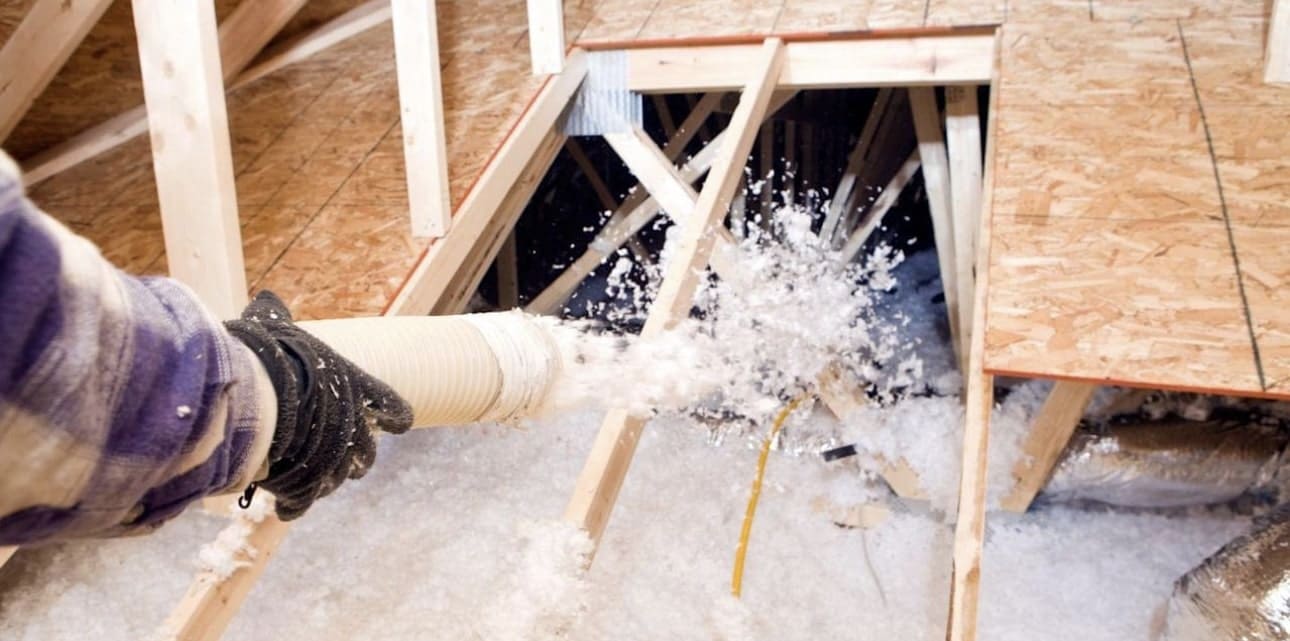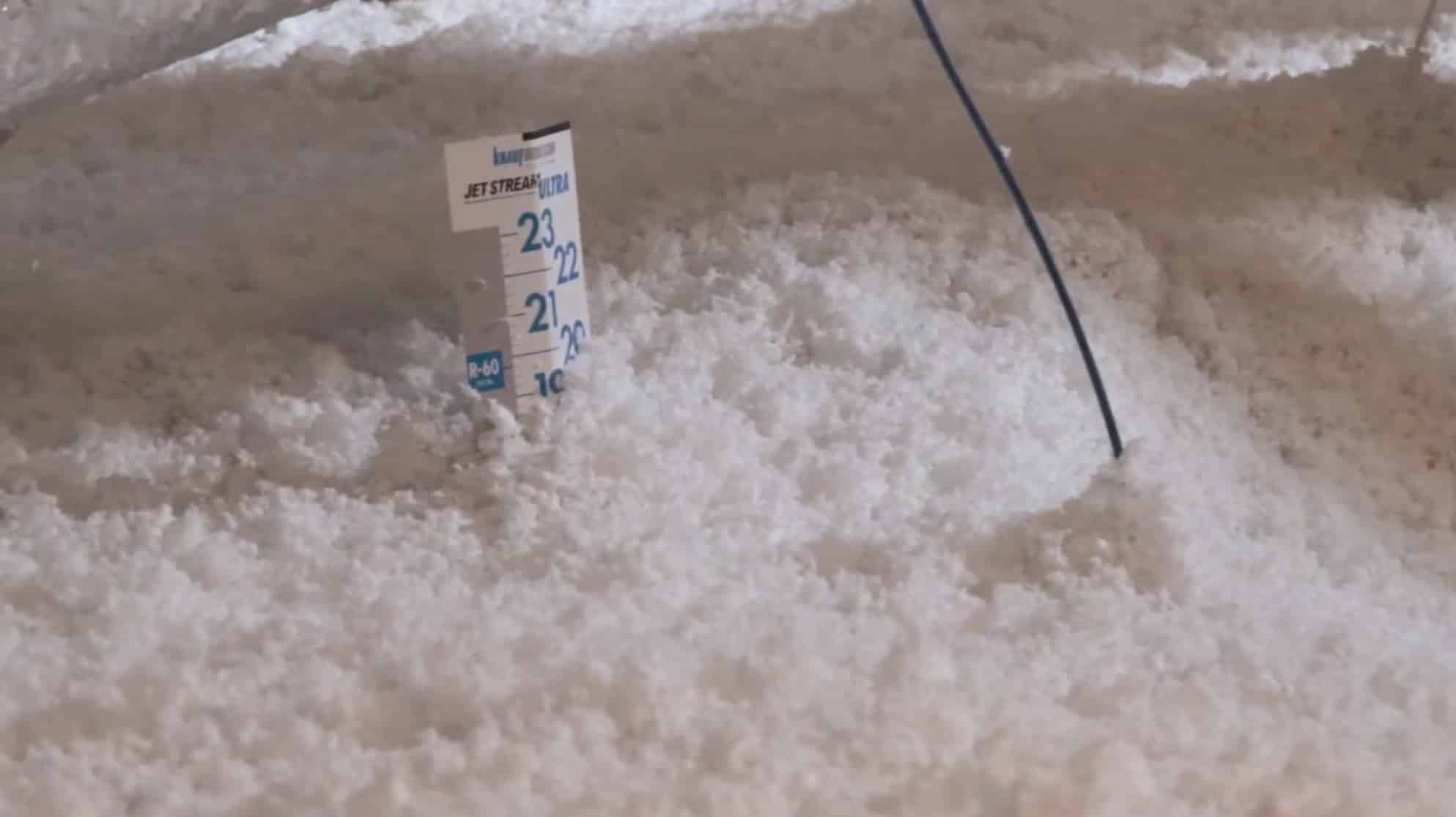The 30-Second Trick For Green Attics
Table of ContentsGreen Attics - QuestionsGreen Attics Things To Know Before You BuyIndicators on Green Attics You Need To KnowThe Basic Principles Of Green Attics Not known Facts About Green AtticsThe Best Guide To Green Attics9 Easy Facts About Green Attics Explained
Building codes call for that air areas in between chimneys and flooring or ceiling assemblies via which they pass be sealed with a non-combustible fire quit (see Number 5-3 and Number 5-4). There is commonly a gap in between the celebration wall surface (such as the shared wall surface between devices in duplexes, triplexes and row houses) and the side of the attic flooring.
A hefty polyethylene sheet which is caulked with acoustical sealant and stapled to the ceiling frames the electrical box. An electric wire diverts from the electrical box and down with a hole into an indoor wall. Openings around electric cables are loaded with caulking or foam sealant, and caulking seals spaces along the top of the interior walls.
After air securing, attic room air flow is your second line of support versus the water vapour that might have located its way into the attic. It guarantees a chillier, well-vented attic room room much less vulnerable to the development of ice dams at the eaves.
A Biased View of Green Attics
You might need to find roofing or soffit vents from outside if they are not clearly visible from inside the attic room. Residences with actually peaked roofing systems and available attics are the easiest to air vent by making use of the proportion of 1 to 300. This ratio refers to unhampered air vent area to the insulated ceiling location.

The following Components detail the ideal approach depending on your attic kind. After you have checked the attic and brought out any remedial job, focus first on air and wetness control.
Getting My Green Attics To Work
On the other hand, spray foam provides air sealing and an initial layer of high top quality insulation that can be topped approximately the desired RSI (R) degree. If the attic retrofit is being finished along with interior renovations, the simplest approach is to set up a new, single air and vapour obstacle on the underside of the ceiling joists.
The major difficulty with this method entails sealing the obstacle to the wall top plate, specifically at the eaves where there is little room to manoeuvre. This area has to be well sealed. Spray foam or stiff board insulation can aid bridge the space in this field. Cut rigid board to fit in between the ceiling joists and to expand from the exterior wall leading plate towards the attic. HVAC repair.
Remove existing insulation from the area you are working with and set it away. Cut foam boards to fit well in between the trusses. Caulk all sides, gaps and joints, see Figures 5-10 and 5-13. Obstructions, such as electrical cables, will need cuts in the obstacle; seal these meticulously to make the obstacle continual.
Spray foam specialists can set up closed-cell foam in between the joists to air seal and include insulation at the exact same time to the ceiling. All existing insulation and dirt must be gotten rid of first to permit a good bond. A minimum of 50 mm (2 in.) is needed; top up with other insulation afterwards.
The 25-Second Trick For Green Attics
(https://padlet.com/nealromo01/green-attics-3sj6sd3319836j2i)
This removes roofing system airing vent and produces what is called a warm roofing system, where the attic room area becomes component of the conditioned (warmed and cooled) residence area. This procedure may appropriate for some attics, however do not proceed without approval from your structure inspector, and after that only utilize a certified spray foam specialist that knows with the procedure.
If there are obstructions above the joists, such as with a truss roof covering, it may be simplest to place batt insulation into the joist areas and after that use loose-fill insulation to produce a full blanket of insulation above the joists and around all blockages. Loose-fill insulation is additionally good on its own, specifically in irregular or obstructed areas.

8 Easy Facts About Green Attics Described
Usage baffles in between each rafter area to avoid it from being blocked (see Number 5-11). Protect over and below cross supporting, splitting or cutting the batt to suit the cross bracing as shown in Number 5-12. Cut one batt into a collection of wedges and then fit a wedge under each support.
The initial layer of batts ought to be thick adequate to completely fill up to the top of the joist space. The second layer can after that run perpendicular across the joists to obstruct any warm circulation through and around the joists (see Figure 5-13). Attic insulation. Make sure that there are no voids between the two layers of insulation
Beginning at one end of the attic and unroll the blanket. Figure 5-11 Baffles can be utilized to keep air movement via the soffit vents Text version Cutaway of baffles between attic roofing system joists with arrows suggesting air activity taking a trip from the outside, via an air vent in the ceiling overhang, and over the baffles.
Top Guidelines Of Green Attics
Number 5-13 The leading layer of insulation runs perpendicular down layer Text version Illustration of layers of batts of insulation in between and over attic joists. Batts on top of joists are vertical to batts in between joists. A polyethylene sheet is laid under both layers of insulation and connected to the top of attic joists by caulking and staples.

If the loosened fill is much deeper than the joists, construct insulation framework (a crib) around the attic hatch to ensure that it can be filled up to the side (see Number 4-7). The bags of insulation product will certainly list how lots of square metres (or square feet) each bag need to cover to give the required RSI he said value.
Green Attics - Truths
If you are having a specialist do the work, calculate the RSI value that you desire and examine the bags of insulation to be made use of. They must suggest the area that one bag will certainly cover at the picked protecting value. You and the professional should after that concur on the overall number of bags to be made use of, the anticipated protecting value and the minimal settled deepness of insulation throughout the attic room, based upon a certain density.